We’re always putting our top effort into the content we create, but what about our content promotion strategies?
As many as 50% of B2B marketers create content to generate brand awareness and interest:
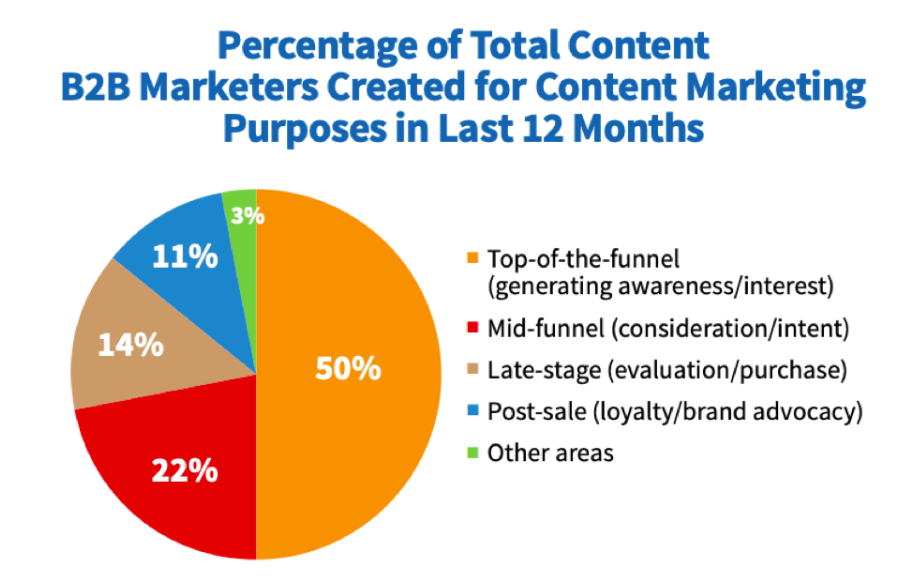
Yet, do you know how many of your website visitors have never heard of you? 🤔
Think about this a bit and you’ll realize that you’re always sharing your content within the same or similar networks. Introducing yourself to a new audience requires finding new networks for distribution. That’s where content promotion gives you a boost.
Content promotion is all over the place for most brands. Social media, videos, ads, email lists, getting backlinks, more social media…. Nobody seems to have nailed the perfect scheme for sharing content and keeping their ROI in check. This is the norm because every company wants to get its product on literally every wall – every digital wall that is.
But there are three content promotion methods that you may have missed. You can use these promotion strategies to tap into new audiences, not just your existing following.
What?! 😲
Yes, these are the only 3 strategies you’ll need to boost traffic to your content from new readers. Tried and tested.
But first, let’s dive into why you should care about content promotion.
Why Content Promotion Is Key to Content Strategy Success
You’ve probably already experienced the dangers of throwing your content aside after publishing it. You polish a post until it's perfect, complete with well-researched data and unheard-of insights, but you don’t have time to properly share it and you didn’t bother to fully optimize it anyway.
So you end up with just another article in the sea of 4+ million articles written every day. Add in all the news outlets, company blogs, personal blog journals, school articles, online magazines…and this number rises even more to push your content back from the eyeballs you’re looking to win.
Here’s where content promotion comes to the rescue. 🚀
Briefly put, for each piece of content you produce you need to spend 80% of your time on promotion, leaving just 20% for the actual writing and content production.
Why all the fuss? Because keeping your content in the limelight for longer will:
- Ensure that your content is always being read. This is not only great for your SEO efforts, but it is also satisfying to see the constant interest in something you wrote.
- Bring in more traffic. And it doesn’t just stop here. You’re starting to build awareness, bring in recurring visitors, and get more leads.
- Drive conversions according to the funnel stage you target with a piece of content. All the way from general awareness to gaining brand advocates.
- Help you become a thought leader in your industry. Spreading educational content, in particular, will solve an issue that so many marketers are currently concerned with: being seen as an expert. Consequently, this increases people’s trust in you and your brand. Let me repeat that. Actively promoting your content can strengthen your leader position compared with a brand that’s just keeping information to themselves.
- Lead to new partnerships. The more people see you as a credible influence driver in your field, the more they will want to collaborate with you.
- Create a community. You don’t even have to do the promotion yourself here. I mean, people are sharing videos of blenders crushing iPhones. What better way to get the word out? So let your imagination run wild.
- Land more social shares and keep spreading the word! And who knows, maybe a link too. This is as easy as it sounds. Getting in front of a larger audience will statistically get more people to share your content, further increasing your online visibility. Maybe even taking it outside of the digital realm via word of mouth.
Traditional content promotion strategies will inevitably pose multiple challenges because, like content, they are omnipresent. Since everyone is getting inspiration from others, ultimately, they’re doing the same things and cluttering our social media feeds with the same type of posts.
As your competition intensifies (like when they start targeting the same audiences, hashtags and keywords as you 😫), your chances of reaching a new, larger audience gets lost amid all the noise.
Click To Tweet
We all feel the pressure to create better content, deliver it faster, and get it in front of more audiences. This is why 90% (my rough estimate; depends on the industry, really) of brands are just sharing content by throwing it left and right, and even spamming your social feeds with no real incentive for you to even click on their link. And rushed-to-production content usually means the promotions strategies will be just as awful.
Add to all this the fact that you might truly not have enough resources to take care of proper promotion. Even a few helping hands among your community can have a real impact (more on that later).
By far the top mistake that marketers make when promoting their content is focusing on an audience or network that’s just too broad for their targets.
Most traditional content promotion methods give you this general audience outreach. Unavoidably, you’ll struggle to expand and retain your target audience.
Worse, the latter challenge is also a result of sheer fear. Human nature comes in and dictates that you not to try anything new because you’ll fail. So you end up doing what works “well enough” and missing out on more profitable ventures.
Déjà vu fact: This is why content writers tend to keep the format of their top posts throughout their whole strategy. But there’s no long-run sustainability here.
For these reasons, you need to find new funnel-blasting ways to expose your content to untapped audiences.
Dive Deeper:
- Why Content Marketing Should Always Be 20% Creation and 80% Promotion
- Paid Content Promotion: A Comparison Of The Different Platforms
- How to Build a High-Performance Content Marketing Strategy
3 Content Promotion Strategies You Need to Master
Finding new ways to promote your content doesn’t have to be a chore or burn you out. Instead, here are three creative strategies you can start using today to boost your traffic beyond your existing readers.
1) Niche Community Promotion
Loyal readers are valuable. But you need to find them first. No, not by sending your post out into the Internet wilderness to compete against millions of others.
Communities of professionals are a pretty big trend these days. These are curated content communities where industry experts share articles, videos and podcasts they deem as highly valuable for the trade.
Find your industry community and you’ve come across your ideal audience.
For example, professional marketers like me turn to Zest for high-value marketing-related content. The new tab Chrome extension app supplies a fresh stream of hyper-personalized marketing content that is updated daily with articles, videos and podcasts all submitted by members of the Zest tribe of users.
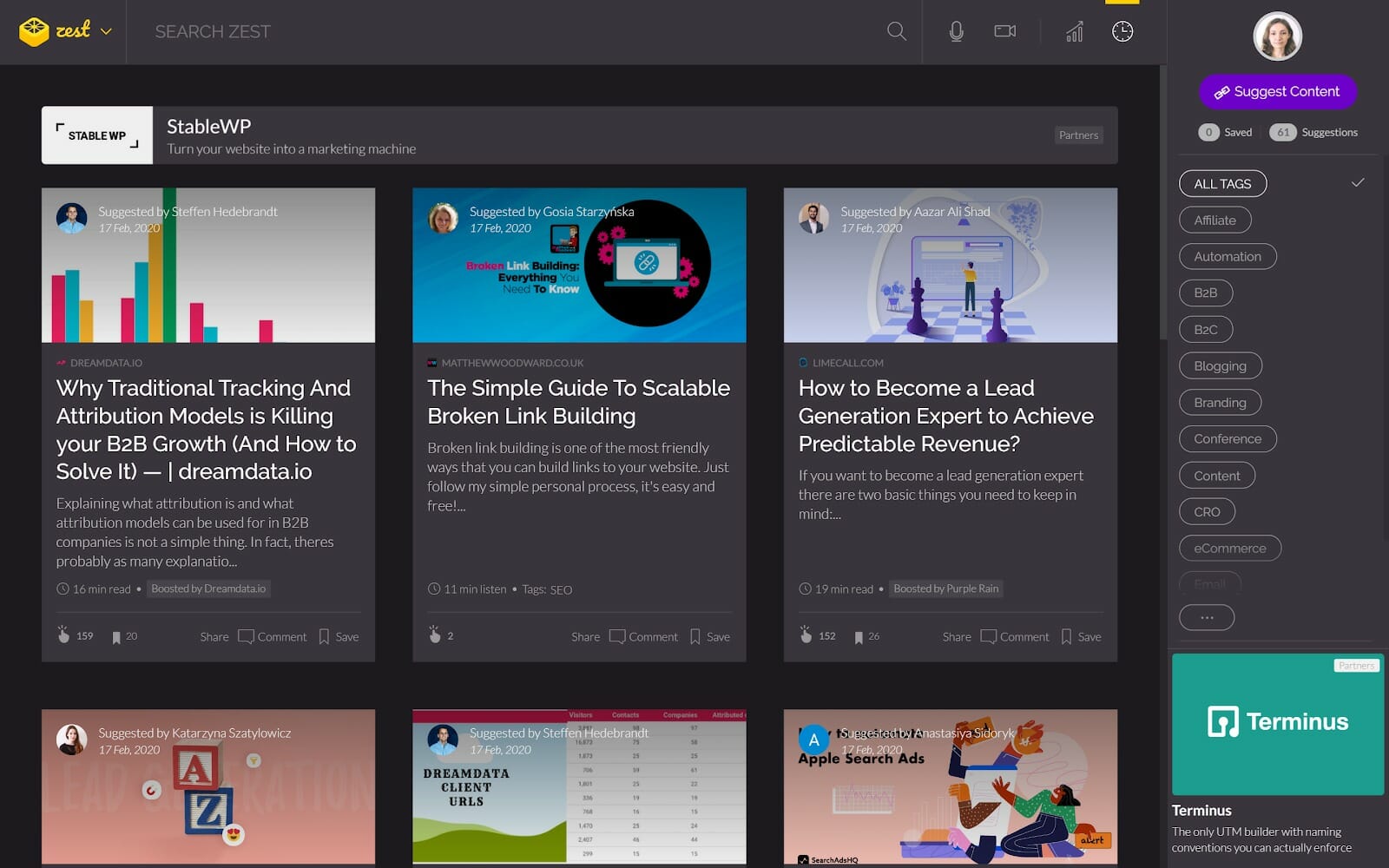
To ensure that the content is worthy of sharing with community members, each piece is evaluated by their own users and artificial intelligence for quality before it is added to the Zest database. If your content makes the cut, it will get its turn as the content of the hour on the Zest content stream.
Sharing your content on Zest is free but you can increase your exposure by purchasing Content Boosts, which puts your content on display in the Zest stream up to twice a day and can receive up to 10x more clicks:
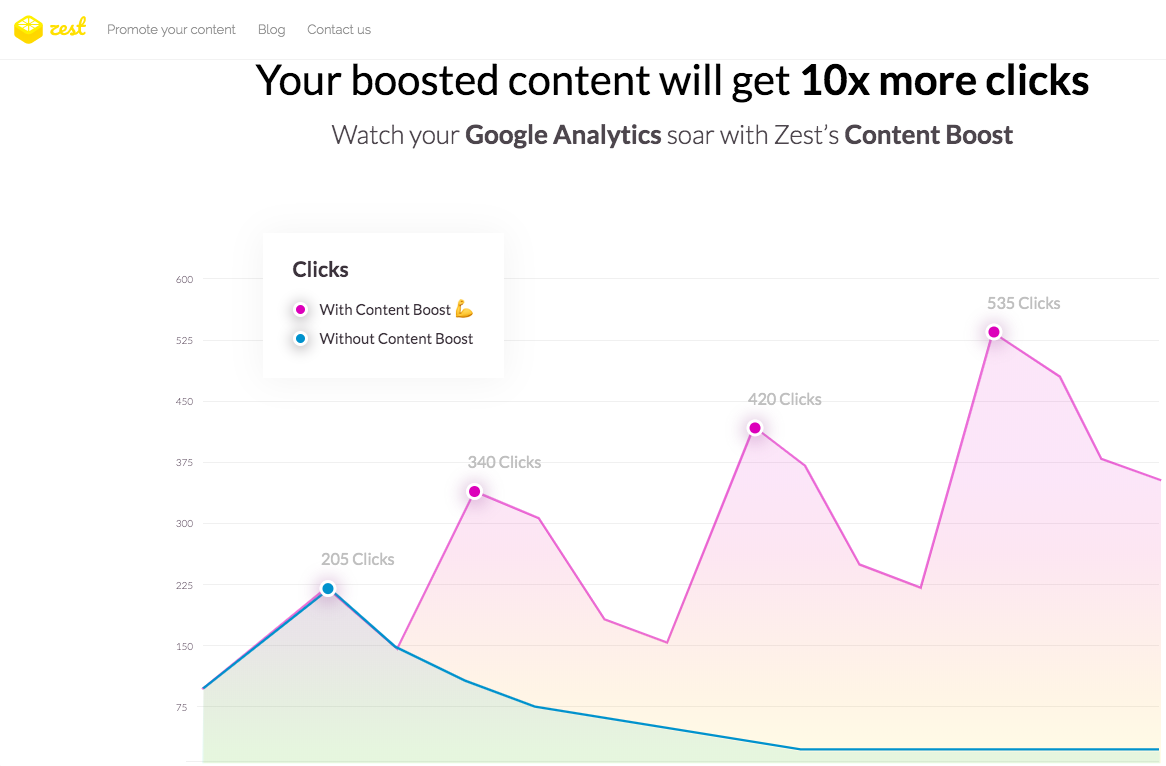
Another niche community that welcomes content is Indie Hackers, where community members share ideas, posts and content related to building and marketing their startups.
Slack Groups
And then there are the private professional communities. Slack is a preferred host for these groups. I’ll just share an example before I tell you how you can use these.
The Product Marketing Alliance Slack group has 7,000+ members, all of whom are involved in the product marketing field and have been verified beforehand to keep the spammers away! Any member can use the #freshcontent channel to share what they’ve been working on. The group’s hosts also update the feed with posts from their organization’s own blog:
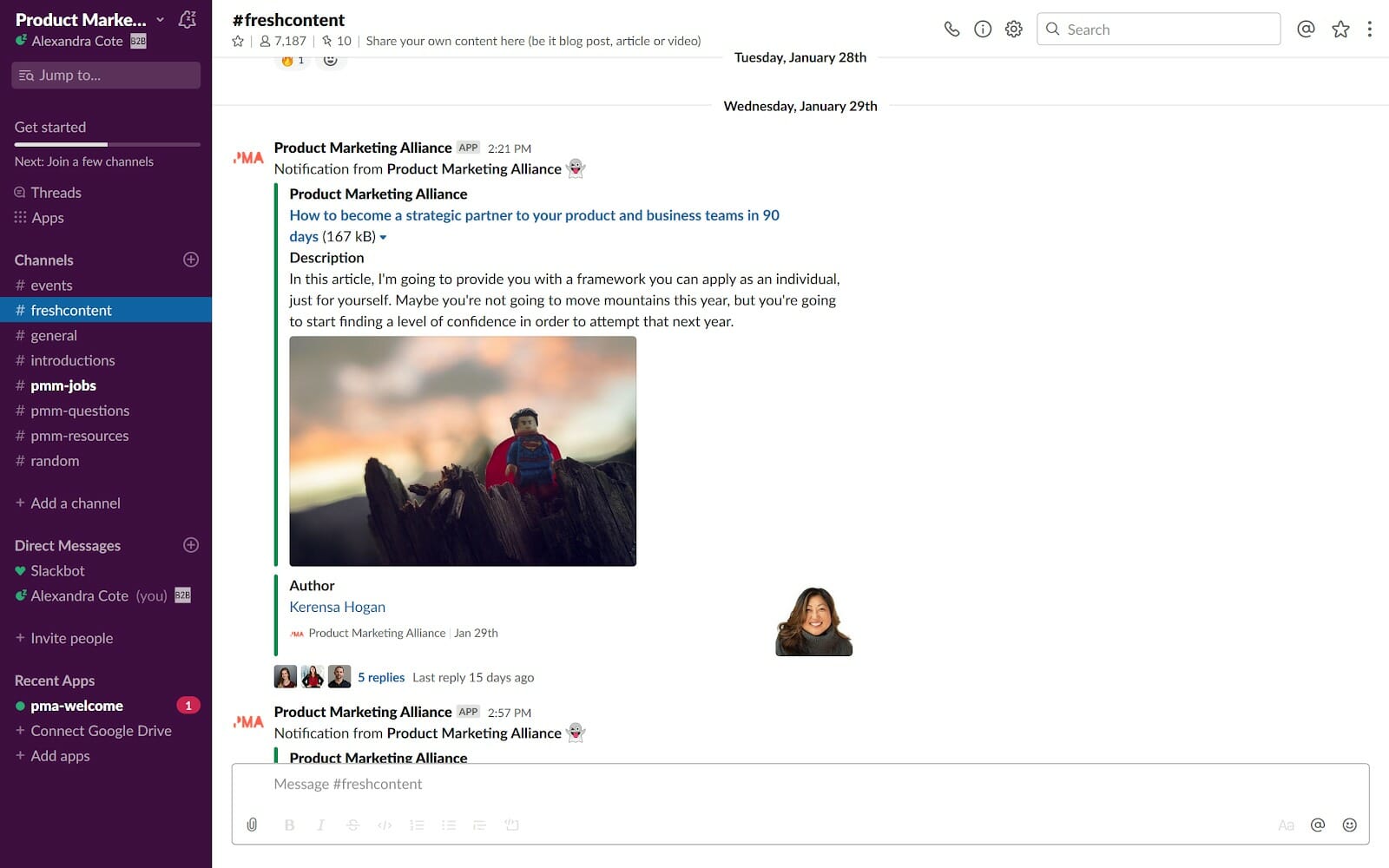
Another marketer-friendly Slack group is hosted by Online Geniuses. The OG Slack group is invitation-only and members share their content and other promotions in the #shameless_plug channel. These groups are also a great source of shareable content for you curators out there.
You can check Slofile for a full list of all Slack groups you can join:
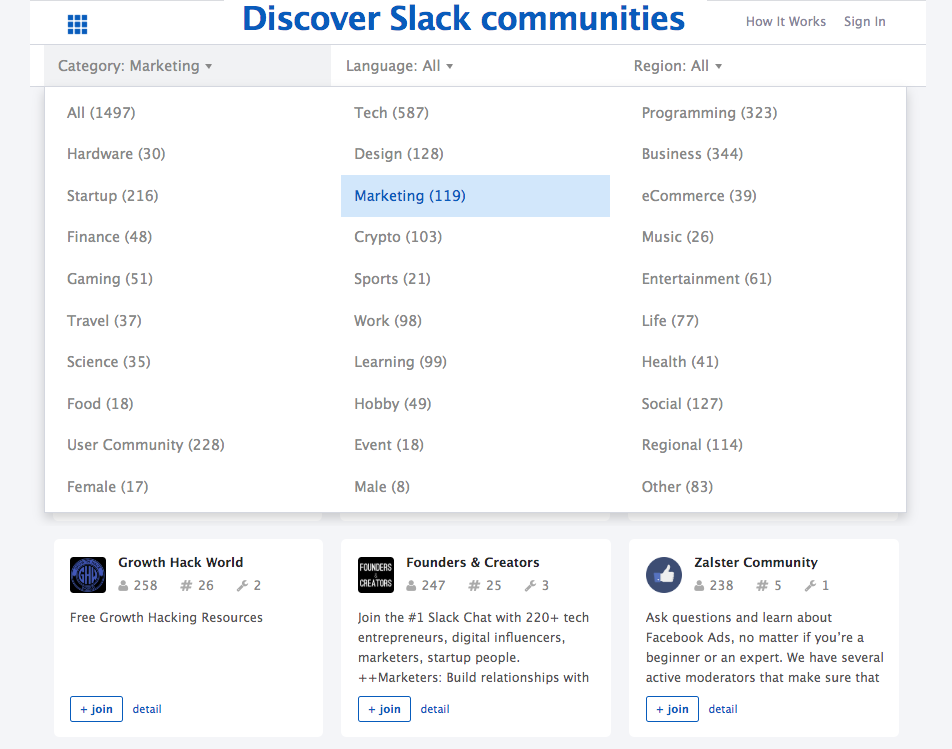
What these communities provide is a safe nest where you know that the active members will truly be interested in your content. Plus, they are great for networking and making new connections. Also, don’t overlook the benefits of building relationships with other community members who could prove to be future business partners.
Additionally, you can turn to the experts in these groups for feedback or even to get their help on future content you create. This strategy will also boost your distribution network.
How does this work? Reach out to community members for a quote or tip to feature in your next piece and in return, they will share the final product with their audience. Talk about tapping into micro-influencers’ networks at zero cost!
Related Content:
- 8 Slack Communities Every Marketer & SEO Should Join
- [Growth Study] Slack: The Fastest Business App Growth in History
Niche Websites
As a marketer, you might already be familiar with GrowthHackers, an online community where marketers discuss anything from SEO to email marketing and, clearly, growth hacks.
If you’re not yet using its power to get your marketing-related content out there, you’re way behind. Their Posts feature lets members submit insightful content that users will upvote or downvote, creating a merit-based hierarchy:
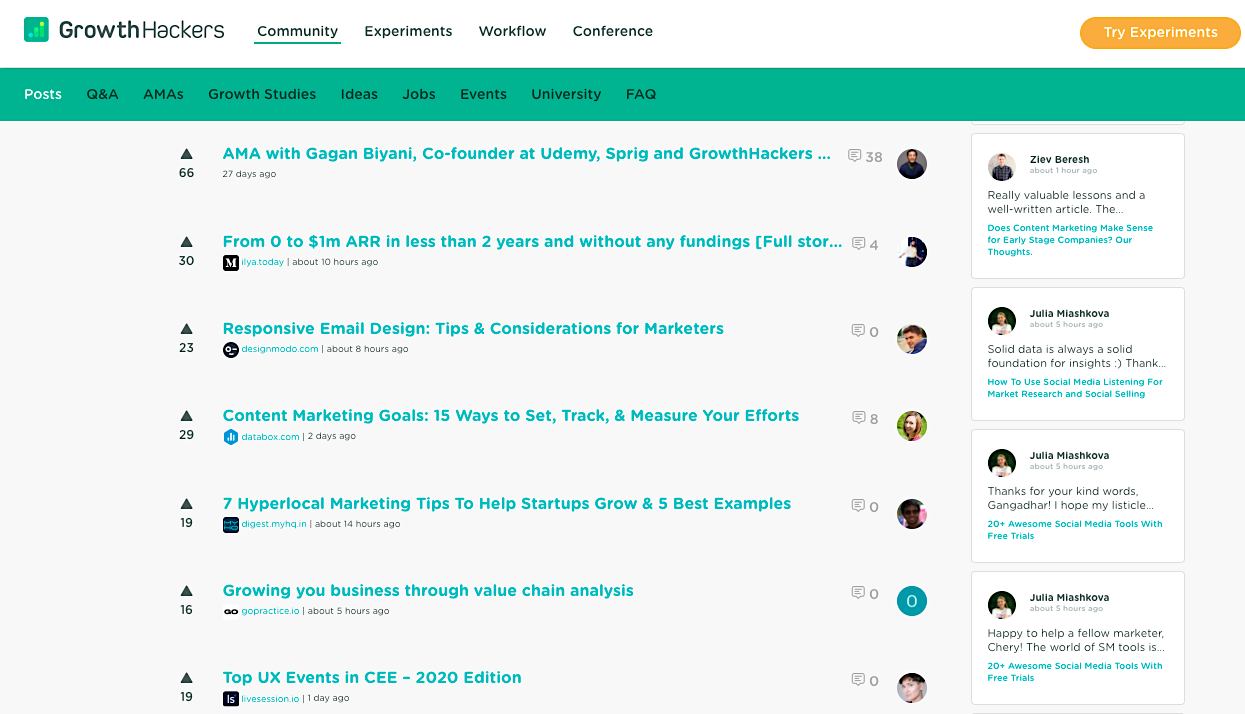
GrowthHub is another similar network you can use for content promotion.
Even common platforms like Facebook and LinkedIn provide a good place for people to exchange content. Some LinkedIn groups are chock full of spam, so look through past content before submitting yours. Alternatively, stick to creating your own network on LinkedIn (try to get a minimum of 7,000+ connections) and sharing regular posts with findings from your content research.
Related Content: 12 High-Performing Facebook Group Engagement Tactics
Subreddits like /r/sales/ or /r/marketing/ (and others that match the topic of your content) also provide highly engaged communities. Reddit users can be a bit tough on promotional content, so use this medium only for insightful content that can add value to pre-existing discussions.
Same for Quora. The question-and-answer website has already been taken over by companies looking to shove their brand into people’s faces. Instead, use the platform to share unique insights and create content paths to your product in place of shameless direct ads.
Remember, too, that you might already have your own little community: your email list. Although your subscribers are an existing audience, you can incentivize them to further share your content or, even better, find other newsletters to feature your posts. Google “get featured in our newsletter” (with quotation marks), keeping in mind that most of these are paid opportunities.
The results can be outstanding when you combine the reach of all these communities. In fact, 35% of marketers say that if they were forced to choose just one promotion strategy for their content, communities would be their one:
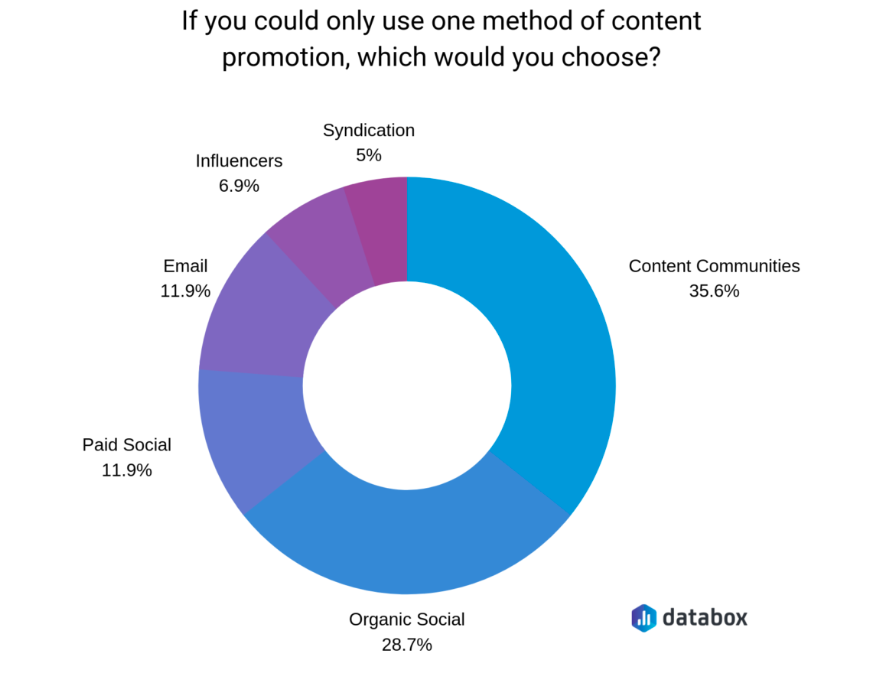
Grow & Convert got 32,977 unique visitors in five months just from promoting in communities.
Ahrefs got roughly 1 million views on their Quora posts. Sure, these didn’t bring in as much traffic as their website, but it’s a solid attempt at raising brand awareness.
Dive Deeper:
- Beyond the Blog Post: 21 Inspirational Branded Content Examples
- 6 Tips for Scaling Up Content Production without Sacrificing Quality
- What’s the Right Content for Each Stage of the Marketing Funnel?
2) Beta Readers Technique for Content Promotion
Generally, beta readers are people you share a manuscript with to get a second opinion before you publish a book. The software industry also uses beta testers to tweak their results and – wait for it – get the word out!
How does this work for content? Let’s have a look at what Hotjar did way before any of us. Before launching their SaaS guide (long-form content), they reached out directly to 5,700+ of their users and asked them to become contributors. This outreach was later the key to the success of the piece.
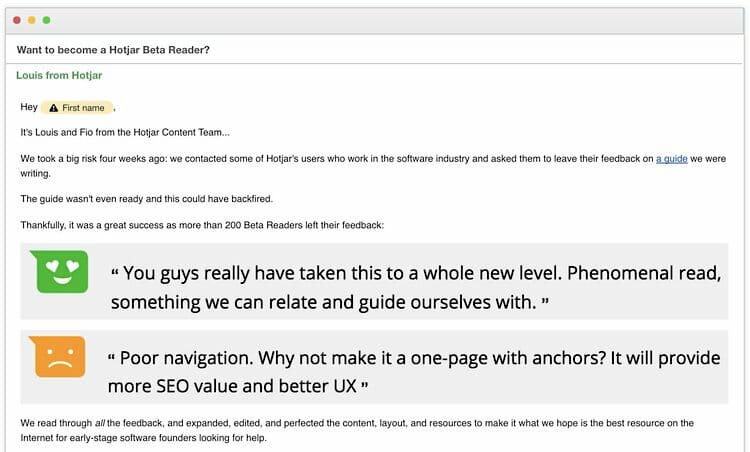
Participants put in the time and effort to review the guide and give their feedback. Later, they were more motivated to share the piece since they had been a part of its creation.
For Hotjar, the payoff was a solid guide and lots of the vital word-of-mouth buzz that we all seek during our first days of promoting something.
Altogether, 448 people applied to be “beta readers” and they all got recognition in return. Hotjar’s guide reached almost 15,000 views during the first two days. A marketer can only dream… 🦄
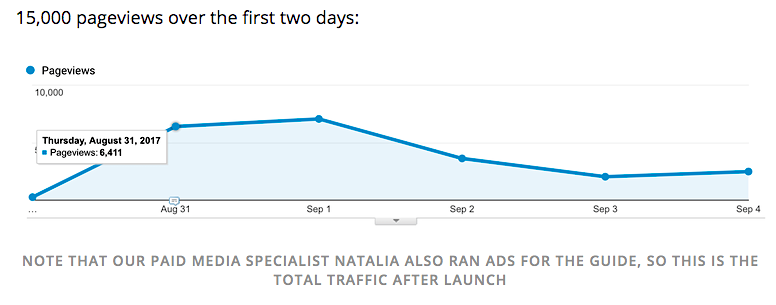
Expert round-up posts work in a similar way as the Hotjar strategy, albeit on a smaller scale. Professionals bring in their quotes and will usually share the article to get more buzz around it because they’ve been featured. Participants know that a mention on a trustworthy website will only solidify their personal brand.
When I’ve created round-up posts, the traffic boost has been anywhere from 3-6x higher than that of a regular post. The real value lies in getting trusted professionals to talk about your content in the first few days after you’ve published it.
A secret tip here: This (well, the resulting traffic and time on page) will also tell Google that your content can provide the expertise that people are looking for and push your ranking higher.
Another beta-participation hack you could use here is publishing an article as an exclusive post before you officially add it to your blog. The best way to do this without falling into the “pay to read this article” scheme is to use your newsletters. Create posts that only your subscribers will be able to access for 1-2 months and gather their feedback before making the official version live. This is where email lists save the day again.
Dive Deeper: 4 Steps To Expand and Promote Your Epic Content
3) Side Project Marketing
Side projects are not just for individuals. As a brand, you can set up multiple types of side or complementary projects: a separate product, community (as already mentioned), publication or even a fun website (like ZenDesk's mini-site to capture the high-intent keyword “ZenDesk alternative”).
Any side project works as a sub-brand. The side project or product you create should be a content promotion-oriented one, and not just another tool.
Let’s look at some real examples.
Muz.li & Behance
A few years ago, Muz.li was acquired by InVision. Before this, Adobe bought Behance. Both provided a huge preexisting community where a brand could easily showcase their creation and be guaranteed a relatively new audience.
These platforms could have also been created in-house, but the smarter move was to get started with millions of members already available.
Drift's Insider
Taking it to the marketing world, a top-performing move is to start a series of courses like Drift’s Insider. This platform uses content promotion heavily by referencing not only their product but also past results and what they’ve done themselves for their content marketing efforts.
Plus, users who take the Conversational Marketing Certification exam will get to display their certificate literally anywhere. This is a first-rate marketing technique we’re seeing as most graduates will showcase the certificate with the Drift branding on it on their websites and social media.
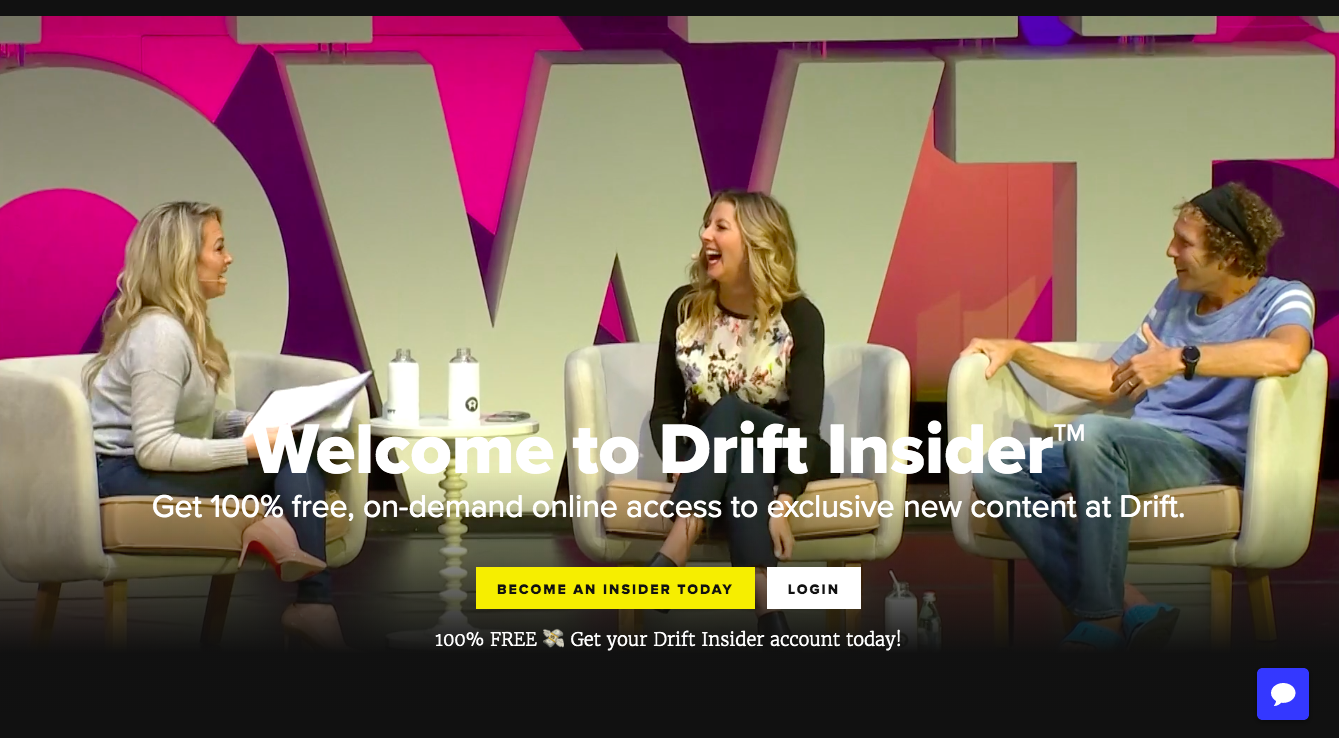
SEMrush Academy
These kinds of learning opportunities also generate immense word-of-mouth advertising for your business. Since their main focus is on educating instead of promoting, content like this is easier for anyone to share.
SEMrush Academy is another great example. Apart from the certifications you can get to prove you’re a proficient user of their tool, they have general courses on PPC, SEO and keyword research. All of these will keep bringing in new users and traffic to the learning hub.
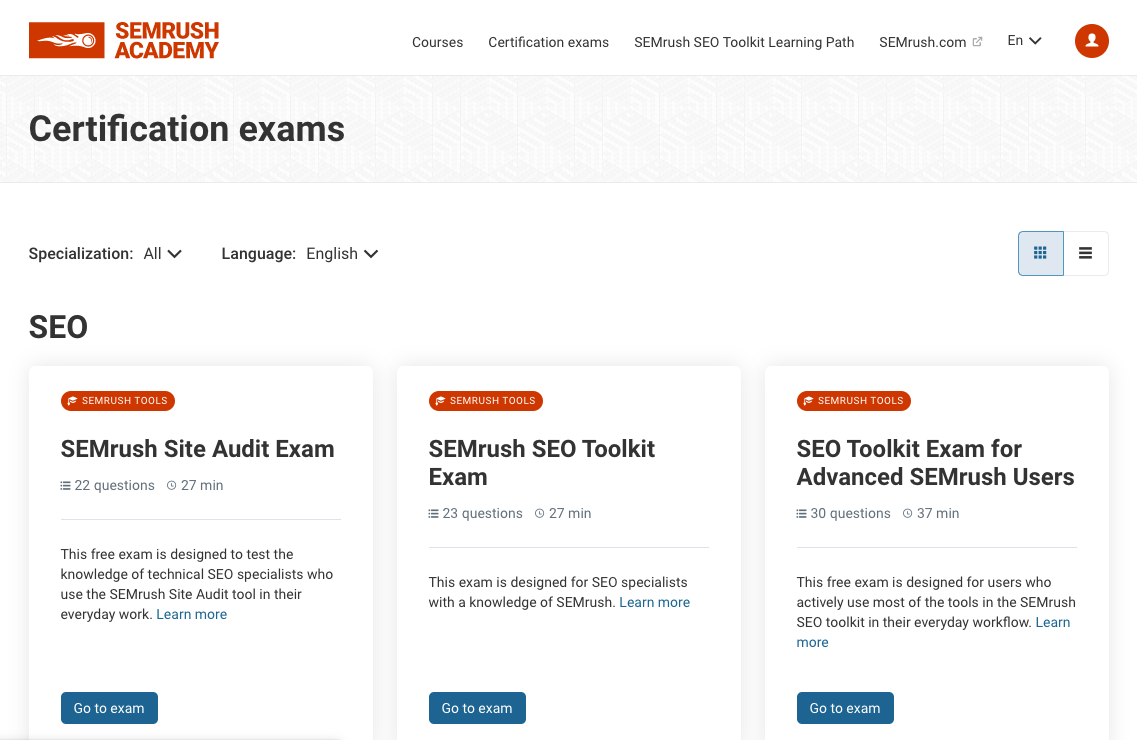
Buffer Community
Remember my previous reference to professional groups? Brand communities can be a good side project, too. The Buffer community, for instance, is exclusive for Buffer’s users. But beyond the brand’s social media tool, its focus lies on helping people and companies develop their brands. Members can ask for advice, share their own tips and articles they worked on or even find a new job or side gig opportunity.
Buffer also gets to use this opportunity to hold special events and drop in occasional mentions of their updates or new content. I actually found out about their podcast from a post in the community asking people to leave their questions.
Leveling Up Podcast
Speaking of which, podcasts can come in handy if you’re looking to create new content or repurpose existing articles and bring in more traffic and buzz around your recent posts. Creation and promotion in a single network. Checked out the Leveling Up podcast yet?
When you produce a podcast episode, make sure you include mentions of your brand or past content. If not, people will just listen to what you have to say but won’t associate the podcast with your company. Don’t overdo it though.
While these side projects are branded, they’re not supposed to be directly “salesy.” In a world where ads are literally in our way at every step, consumers are constantly running from anything that looks like a sales pitch. Offering valuable facts and figures instead of a “buy this” poster is by far more refreshing to see and share.
Find a balance between self-promotion and audience engagement. Keep the podcast separate from your main domain if you don’t want people to run the second they see a new episode because they subconsciously expect yet another sales pitch.
Related Content: Why Neil Patel Pays $30,000 for Content & Gives it Away For Free [podcast]
Where to Take Your Content Promotion Next
Open Google Analytics and check where most of your traffic comes from. If the majority of your referral sources are from the same industry websites or have similar audiences and you’re not seeing any real traffic or conversion growth, it’s time you added these these tactics to your content promotion strategy plan.
Start with the strategies that are the easiest to add to your workflow. If you ask me, going for niche communities is a good choice. Contributing to a group that's already interested in what you do requires little preparation and you might already have enough content and resources to get started with this content promotion method.
Now, you take it from here! 👊
The post 3 Scalable Content Promotion Strategies to Blast Your Funnel appeared first on Single Grain.
from Single Grain https://ift.tt/2HTl9Zg

No comments:
Post a Comment